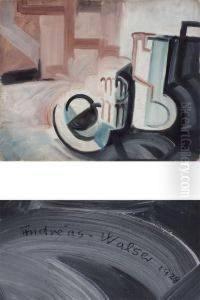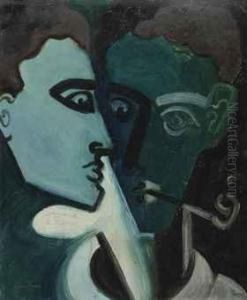Andreas Walser Paintings
Andreas Walser was a Swiss artist and painter whose life and career were cut tragically short. Born on April 3, 1908, in Chur, Switzerland, Walser showed a profound interest in art from a young age. His artistic talent was evident, and he began to pursue his passion for painting earnestly as a young man.
Despite his early promise, Walser's career was marked by a constant struggle for recognition and financial stability. In search of broader horizons and the artistic ferment, he moved to Paris in the late 1920s. Paris was then the epicenter of the art world, a melting pot of styles and ideas where many artists found inspiration and community. There, Walser immersed himself in the avant-garde scene, engaging with the currents of modern art that were reshaping the cultural landscape at the time.
Walser's work from this period reflects the influences of the modernist movements that were prevalent, exhibiting traits of Expressionism and perhaps Surrealism. His paintings often depicted figures in a style that blended abstraction with figuration, revealing a unique approach to form and color.
However, Walser's potential was never fully realized. His life was tragically cut short when he died on January 25, 1930, at the age of 21. The circumstances of his death were surrounded by mystery, adding a layer of intrigue to his already poignant story. Some sources suggest that he died in a mountaineering accident, while others hint at suicide. What is certain is that his untimely death deprived the art world of a promising talent who might have gone on to achieve greater acclaim had he lived longer.
In the years following his death, Andreas Walser's work has been revisited by art historians and collectors, and his contributions to early 20th-century modern art have been reassessed. While his oeuvre is limited due to his short life, the existing pieces stand as a testament to an artist whose vision was burgeoning at the time of his unexpected death.

